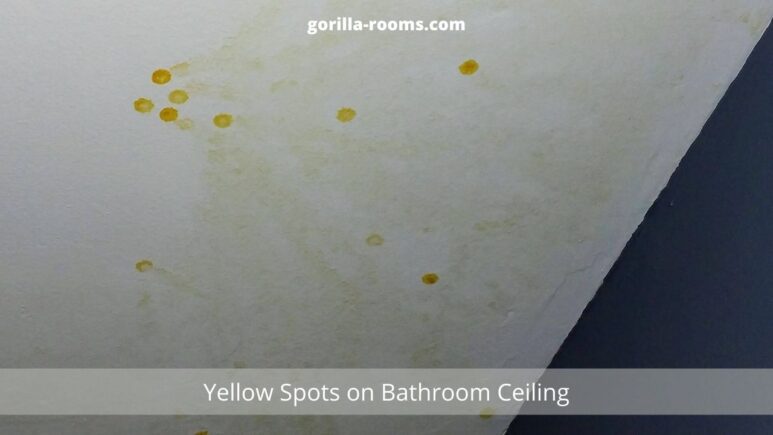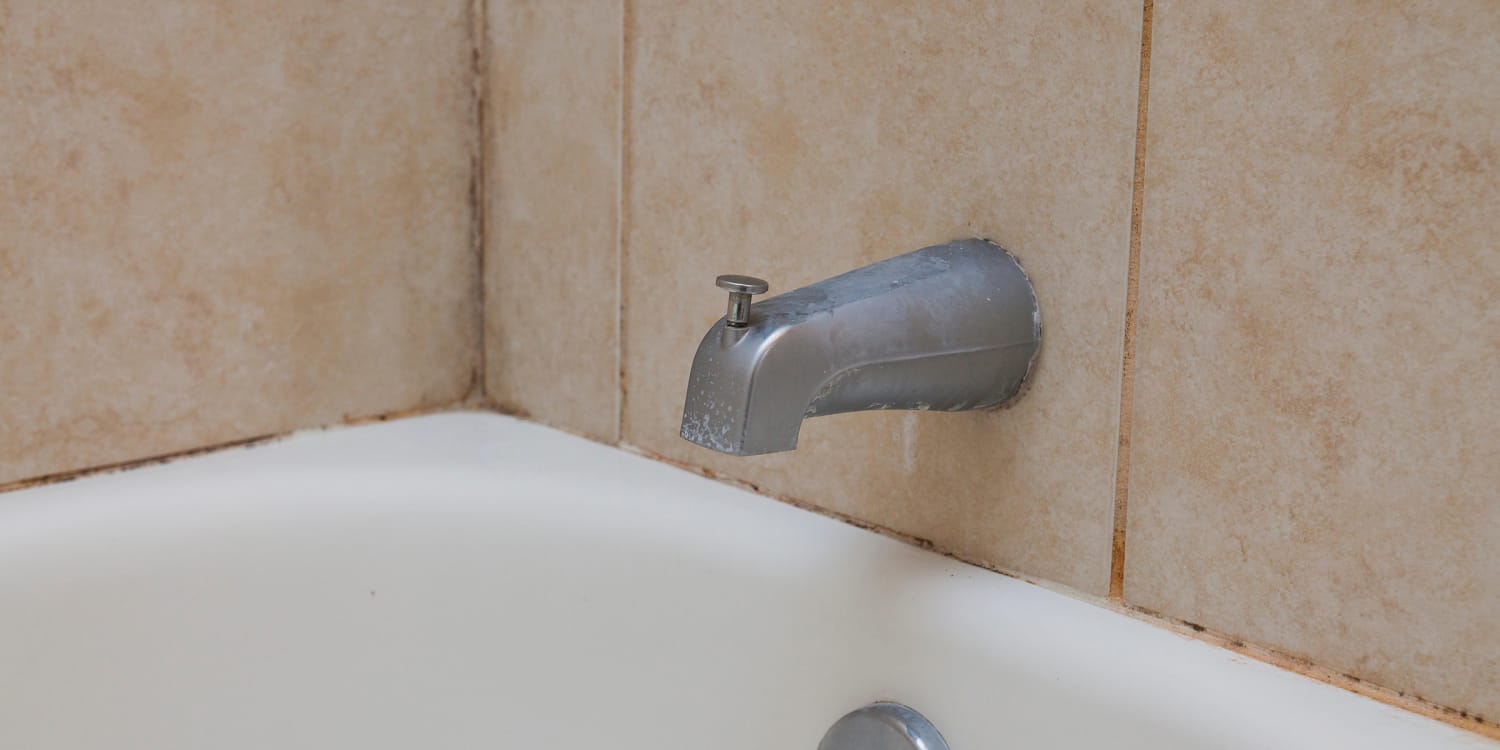Understanding Yellow Mildew

Yellow mildew is a common problem in bathrooms, often appearing as unsightly yellow or brown stains on walls, ceilings, grout, and even shower curtains. This discoloration is caused by the growth of various types of fungi, commonly referred to as mildew. Mildew thrives in moist environments, and bathrooms are particularly susceptible due to their high humidity levels and frequent exposure to water.
Causes of Yellow Mildew Growth
The growth of yellow mildew is primarily driven by the presence of moisture and humidity. Bathrooms are ideal breeding grounds for these fungi due to the following factors:
- Showering and Bathing: The steam and water droplets generated during showers and baths create a humid environment, providing ideal conditions for mildew to flourish.
- Poor Ventilation: Inadequate ventilation allows moisture to linger in the air, creating a damp atmosphere that encourages mildew growth. This is particularly problematic in bathrooms with limited or non-functional exhaust fans.
- Leaky Pipes or Faucets: Leaks in pipes, faucets, or showerheads can contribute to excess moisture, creating a favorable environment for mildew development.
- Condensation: The temperature difference between warm, moist air and cold surfaces, such as walls or windows, can lead to condensation. This condensation provides a source of moisture for mildew growth.
Types of Fungi That Cause Yellow Mildew
Yellow mildew is caused by various types of fungi, primarily belonging to the genera *Aspergillus*, *Cladosporium*, and *Penicillium*. These fungi are common in the environment and can easily colonize damp surfaces in bathrooms.
*Aspergillus* and *Penicillium* are known for producing mycotoxins, which can be harmful to human health.
Recognizing and Identifying Yellow Mildew

Yellow mildew, a common sight in bathrooms, is a type of fungus that thrives in damp, humid environments. It can appear as unsightly yellow or orange patches on surfaces, often accompanied by a musty odor. Recognizing and identifying yellow mildew is crucial for addressing the issue effectively and preventing its spread.
Appearance of Yellow Mildew
Yellow mildew typically presents as a powdery or fuzzy growth, ranging in color from pale yellow to a deep orange. It can be found in various locations within the bathroom, including:
- Shower walls and floors
- Around the bathtub and sink
- Grout lines
- Ceiling and walls
The texture of yellow mildew can vary, sometimes appearing as a smooth film, while other times it resembles a raised, textured patch. The growth pattern can be irregular, with patches often appearing in clusters or spreading across surfaces.
Distinguishing Yellow Mildew from Other Bathroom Stains
While yellow mildew is a common bathroom issue, it’s important to distinguish it from other stains or mold types. Here are some key differences:
- Black mold: Black mold is typically darker in color and has a more distinct, velvety texture. It’s often associated with a strong, musty odor.
- Water stains: Water stains are usually lighter in color and have a smooth, flat appearance. They may leave behind a chalky residue.
- Mineral deposits: Mineral deposits, often caused by hard water, can appear as white or yellowish stains, but they typically have a rough, crystalline texture.
If you’re unsure about the nature of a stain, it’s always best to err on the side of caution and treat it as mildew.
Visual Guide to Yellow Mildew Growth, Yellow mildew in bathroom
To better understand the stages of yellow mildew growth, imagine a visual guide with three distinct stages:
- Stage 1: Initial Growth: A faint, almost imperceptible yellow discoloration appears on the surface, often resembling a dust-like coating.
- Stage 2: Visible Growth: The yellow discoloration becomes more prominent, taking on a powdery or fuzzy appearance. The patches may start to spread and cluster together.
- Stage 3: Advanced Growth: The yellow mildew has grown significantly, forming thick patches that can be easily seen and felt. The surface may be covered in a dense, textured layer of mildew.
This visual guide helps to understand the progression of yellow mildew growth and the importance of addressing it early on to prevent further spread.
Preventing and Removing Yellow Mildew: Yellow Mildew In Bathroom

The battle against yellow mildew in bathrooms is a continuous one. While it thrives in moist environments, understanding its vulnerabilities allows us to outsmart it. This section delves into proactive measures to prevent its growth and effective strategies for its removal.
Preventing Yellow Mildew Growth
Preventing yellow mildew from taking root is crucial. By understanding its growth conditions, we can implement effective strategies to keep it at bay.
- Ventilation: Good ventilation is the cornerstone of mildew prevention. Ensure proper airflow in your bathroom by using exhaust fans during and after showers. Open windows whenever possible to allow fresh air circulation.
- Prompt Drying: Moisture is the lifeblood of mildew. Wipe down surfaces, especially shower walls, floors, and tubs, after each use. This removes excess moisture and minimizes the chances of mildew growth.
- Reduce Humidity: Minimize humidity levels in your bathroom by using a dehumidifier, especially during humid seasons. This can help create a less hospitable environment for mildew.
- Sealant: Apply a mildew-resistant sealant to grout lines and areas prone to moisture buildup. This creates a barrier that prevents mildew from penetrating the surface.
- Cleaning Routine: Establish a regular cleaning routine for your bathroom. This includes cleaning shower walls, floors, and tubs with a mildew-resistant cleaner at least once a week.
Removing Yellow Mildew
Removing existing mildew requires a multi-pronged approach that combines effective cleaning solutions, proper scrubbing techniques, and ventilation strategies.
- Cleaning Solutions:
- Bleach Solution: A bleach solution (1 part bleach to 10 parts water) is a powerful mildew remover. Apply it to the affected area, let it sit for 10 minutes, then scrub with a brush and rinse thoroughly.
- Vinegar Solution: White vinegar is a natural mildew killer. Apply undiluted vinegar to the affected area, let it sit for 30 minutes, then scrub with a brush and rinse.
- Baking Soda Paste: A paste made with baking soda and water can also be used to remove mildew. Apply the paste to the affected area, let it sit for 15 minutes, then scrub with a brush and rinse.
- Commercial Mildew Cleaners: Several commercially available mildew cleaners offer effective solutions. Always follow the manufacturer’s instructions carefully.
- Scrubbing Techniques:
- Soft-Bristled Brush: Use a soft-bristled brush to scrub the affected area gently. Avoid using harsh scrubbing tools that can damage the surface.
- Toothbrush: A toothbrush can be used to reach tight spaces and crevices where mildew can grow.
- Steam Cleaner: A steam cleaner can effectively kill mildew and loosen it from surfaces.
- Ventilation: Maintain good ventilation during and after cleaning to prevent mildew spores from spreading.
Cleaning Product Comparison
| Cleaning Product | Effectiveness | Safety | Cost |
|---|---|---|---|
| Bleach Solution | High | Moderate (can be harsh on surfaces) | Low |
| Vinegar Solution | Moderate | High (natural and non-toxic) | Low |
| Baking Soda Paste | Moderate | High (natural and non-toxic) | Low |
| Commercial Mildew Cleaners | High | Variable (check product labels) | Moderate to High |
Yellow mildew in bathroom – Yellow mildew in the bathroom is a common problem, often exacerbated by moisture and poor ventilation. While modern bathrooms often feature sleek, minimalist designs, the charm of old style bathroom furniture can sometimes contribute to the issue. The intricate carvings and ornate details on these pieces can trap moisture, providing a breeding ground for mildew.
Regular cleaning and proper ventilation are crucial to combat this issue and preserve the beauty of these timeless pieces.
Yellow mildew in a bathroom is not only unsightly but also a sign of moisture buildup, which can lead to other issues. While keeping the bathroom well-ventilated is crucial, the choice of bathroom windows can also play a role in mitigating moisture problems.
Choosing the right type of obscure glass, such as frosted or patterned glass, can help maintain privacy while allowing natural light to enter, types of obscure glass for bathroom windows , which in turn can help reduce condensation and the growth of yellow mildew.